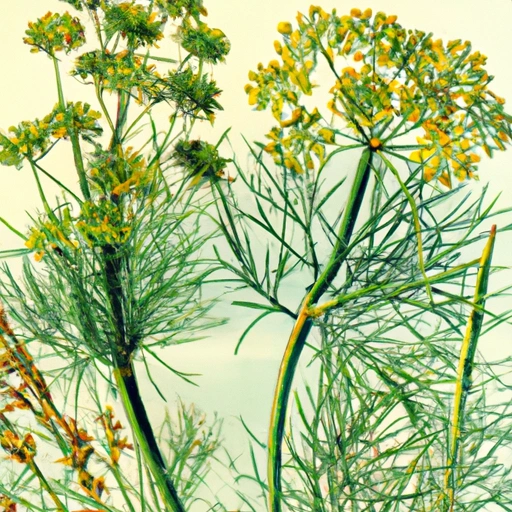Dill
Description

Dill, scientifically known as Anethum graveolens, is a fragrant herb widely used in various culinary traditions around the world. Characterized by its slender stems, soft leaves, and distinctive aroma, dill adds a fresh, slightly tangy flavor to dishes. It is available in fresh, dried, and seed form, making it a versatile ingredient for an array of recipes. Dill is known for both its leaves, often referred to as dill weed, and its seeds, which are used as a spice.
Common uses
In cooking, dill is commonly used to flavor a variety of dishes, including soups, salads, sauces, and pickles. It complements seafood and poultry well, and dill seeds are often used in bread, cakes, and other baked goods. In addition to its culinary uses, dill oil extracted from the seeds is used in the manufacturing of soaps, perfumes, and other cosmetic products.
Nutritional value
Calories
Fresh dill leaves contain approximately 43 calories per 100 grams, while dill seeds have about 305 calories per 100 grams.
Protein
Dill leaves provide about 3.5 grams of protein per 100 grams, and dill seeds offer approximately 16 grams per 100 grams.
Fat
Dill leaves contain roughly 1.1 grams of fat per 100 grams, and dill seeds contain about 14.5 grams per 100 grams.
Carbohydrates
The carbohydrate content in dill leaves is about 7 grams per 100 grams, with dill seeds at about 55 grams per 100 grams.
Vitamins
Dill is rich in vitamins, particularly vitamin A and vitamin C, which are essential for maintaining good vision and a strong immune system.
Minerals
The herb is also a good source of minerals like iron, magnesium, and calcium, which are vital for maintaining healthy bodily functions.
Health benefits
Dill is known for its digestive benefits, as it may help alleviate bloating and soothe an upset stomach. Its antioxidant properties can help neutralize free radicals in the body. Some research also suggests that dill may have antibacterial effects and could contribute to better bone health due to its calcium content.
Potential risks
While dill is generally safe for consumption, it can cause allergic reactions in some individuals. As with any herb, it should be used in moderation, especially by pregnant or breastfeeding women, as excessive consumption may have adverse effects.
Common recipes
Dill is a staple in recipes such as dill pickles, potato salads, dill sauce for salmon, and Scandinavian gravlax. It can also be found in traditional dishes like Russian borscht, Greek tzatziki, and various Middle Eastern salads.
Cooking methods
When using dill in cooking, it is typically added toward the end of the cooking process to retain its delicate flavor. Dill seeds, being more robust, are often used at the beginning of cooking to infuse the dish with their aromatic essence.
Pairing with other ingredients
Dill pairs well with lemon, garlic, mustard, and creamy dressings. It also complements vegetables such as cucumbers, carrots, and beets, as well as proteins like fish, chicken, and lamb.
Summary
Dill is a flavorful, aromatic herb used in many cuisines worldwide. It offers nutritional benefits, including vitamins and minerals, and has been associated with various health benefits. Though it comes with potential risks for some individuals, dill remains a popular ingredient for its unique taste and versatility in cooking.